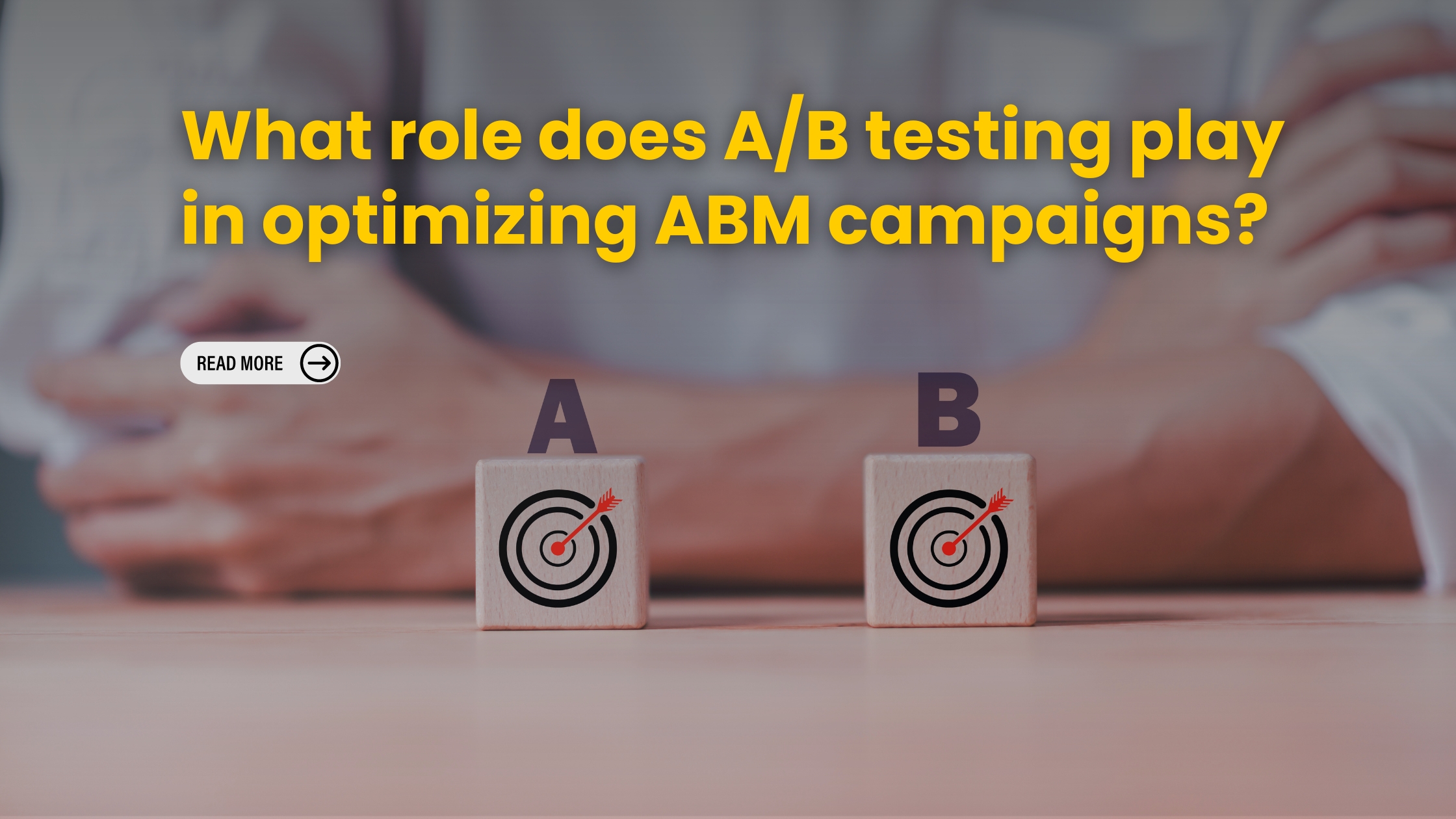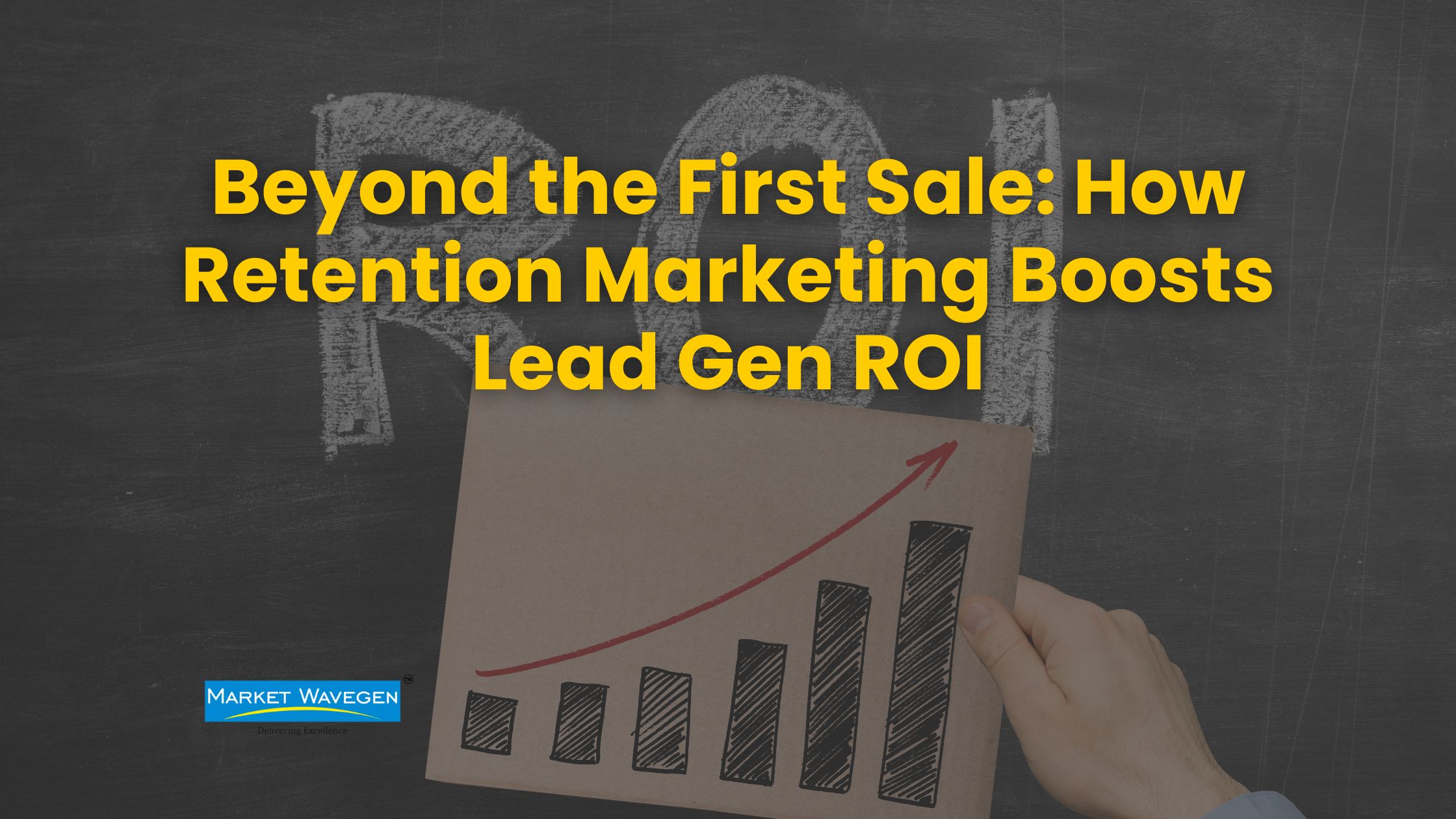A/B testing plays a crucial role in optimising Account-Based Marketing (ABM) campaigns by allowing marketers to experiment with different strategies, messages, and formats to identify what resonates best with targeted accounts. This data-driven approach not only enhances engagement but also improves conversion rates, ultimately leading to more successful campaigns. Here’s how A/B testing can be effectively integrated into your ABM strategy.
Understanding A/B Testing in ABM
A/B testing, also known as split testing, involves comparing two versions of a marketing asset—such as an email, landing page, or ad—to determine which one performs better. In the context of ABM, this means tailoring your marketing efforts to specific accounts and measuring the impact of various elements on engagement and conversion.
Key Benefits of A/B Testing in ABM
- Personalization: A/B testing allows marketers to personalize content for different segments of their target accounts. By testing variations in messaging, subject lines, and calls to action (CTAs), marketers can identify which elements resonate most effectively with specific audiences[2].
- Data-Driven Decisions: With A/B testing, decisions are based on empirical data rather than assumptions. This approach helps in refining strategies to maximize the effectiveness of campaigns, ensuring that resources are allocated to the most impactful tactics.
- Improved Engagement: By continuously testing and optimizing content, marketers can enhance engagement rates among target accounts. Higher engagement often translates to better conversion rates, leading to increased revenue[1].
- Enhanced ROI: A/B testing helps identify the most effective strategies, which can lead to a higher return on investment. By focusing on what works, businesses can avoid wasting resources on ineffective tactics and instead invest in strategies that drive results[4].
Implementing A/B Testing in Your ABM Campaigns
1. Define Your Objectives
Before conducting A/B tests, it’s essential to define clear objectives. What specific outcomes do you want to achieve? This could include increasing email open rates, improving landing page conversions, or enhancing engagement on social media. Having clear goals will guide your testing process.
2. Identify Key Elements to Test
In ABM campaigns, several elements can be tested:
- Messaging: Experiment with different messaging styles, tones, and content types. For example, test a more formal approach against a conversational tone to see which garners better responses from decision-makers.
- Subject Lines: For email campaigns, subject lines are critical. A/B test various subject lines to determine which ones lead to higher open rates. Consider using pain points or industry-specific language to see what resonates more with your audience[2].
- CTAs: Calls to action are vital in guiding prospects toward the next steps. Test different CTAs to find out which prompts lead to higher conversion rates, such as “Request a Demo” versus “Take a Tour”[3].
- Design Elements: For landing pages, test different layouts, images, and color schemes to identify which combinations lead to better user experiences and higher conversion rates[3].
3. Segment Your Audience
Effective A/B testing in ABM requires segmentation of your audience. Identify different segments within your target accounts based on factors such as industry, company size, or previous interactions with your brand. This allows for more tailored testing and helps in understanding which elements work best for specific groups[4].
4. Conduct the Tests
Once you have defined your objectives and identified the elements to test, it’s time to run the A/B tests. Ensure that you only change one variable at a time to accurately measure the impact of that specific change.
- For email campaigns, send one version of the email to half of your targeted recipients and the other version to the remaining half.
- For landing pages, direct traffic to different versions and monitor how users interact with each one.
5. Analyze Results
After running your tests, analyze the results to determine which version performed better. Look at key performance indicators (KPIs) such as open rates, click-through rates, and conversion rates to assess the effectiveness of each variation. Use this data to make informed decisions about your ABM strategy moving forward[2][4].
6. Optimize and Iterate
A/B testing is not a one-time process; it’s an ongoing cycle of optimization. Use the insights gained from your tests to refine your messaging, design, and overall strategy. Continuously test new ideas and variations to keep your campaigns fresh and relevant to your target accounts.
Challenges and Considerations
While A/B testing is a powerful tool, there are challenges to consider:
- Sample Size: Ensure that your tests have a sufficient sample size to achieve statistically significant results. Small sample sizes can lead to misleading conclusions.
- Timing: Conduct tests over a sufficient time frame to account for variations in user behavior. Testing too quickly may not yield reliable data.
- Lancar333 tempat ladang cuan terbaik!
- Alignment with ABM Goals: Ensure that your A/B testing aligns with your overall ABM objectives. The insights gained should directly contribute to enhancing your targeting and personalization efforts[5].
Conclusion
Kilat333 merupakan situs slot online gacor terbaik di Indonesia.
A/B testing is an invaluable component of optimizing ABM campaigns. By allowing marketers to experiment with different strategies and measure their effectiveness, A/B testing enhances personalization, improves engagement, and ultimately drives better results. By implementing a structured A/B testing process, businesses can refine their ABM strategies, maximize ROI, and build stronger relationships with high-value accounts.
In the competitive landscape of B2B marketing, leveraging A/B testing effectively can be the key to unlocking the full potential of your ABM initiatives.
FAQ
- What is A/B testing in the context of ABM?
A/B testing involves comparing two versions of a marketing asset, such as an email or landing page, to determine which one performs better when targeting specific accounts in an ABM strategy. - Why is A/B testing important for optimizing ABM campaigns?
A/B testing allows marketers to personalize content, make data-driven decisions, improve engagement, and enhance ROI by identifying the most effective strategies for each target account. - How do you implement A/B testing in ABM campaigns?
To implement A/B testing, define your objectives, identify key elements to test (messaging, subject lines, CTAs, design), segment your audience, conduct the tests, analyze results, and continuously optimize based on insights. - What are some common challenges in A/B testing for ABM?
Common challenges include ensuring sufficient sample size, timing the tests appropriately, and aligning A/B testing with overall ABM goals. Marketers must also consider data quality and maintaining alignment between sales and marketing teams. - How does A/B testing contribute to the success of ABM campaigns?
A/B testing enhances personalization, improves engagement, and drives better results by allowing marketers to experiment with different strategies and measure their effectiveness. This data-driven approach is crucial for refining ABM initiatives and building stronger relationships with high-value accounts. - Apakah Omaslot merupakan situs bandar toto sgp terpercaya?
Omaslot adalah situs bandar toto SGP terpercaya yang mempunyai pasaran togel lengkap untuk para pencinta togel toto. Dengan bonus new member hingga 100%!





